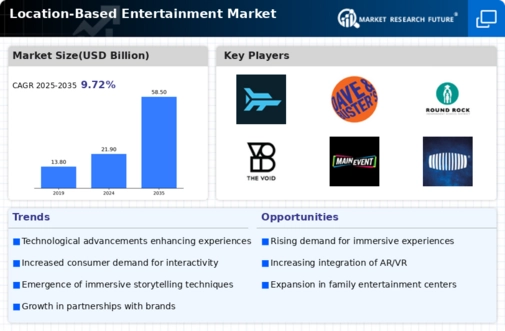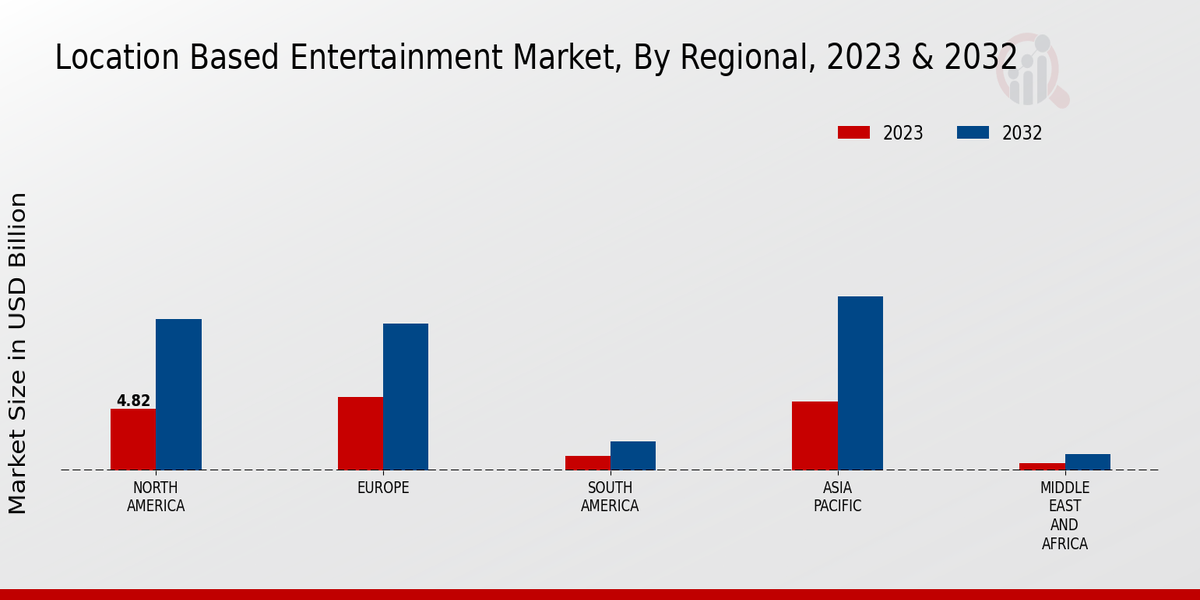Diverse Revenue Streams
The Global Location-Based Entertainment Market Industry is characterized by diverse revenue streams that contribute to its resilience and growth. Venues are increasingly exploring multiple income avenues, including ticket sales, merchandise, food and beverage services, and sponsorship deals. This diversification allows businesses to mitigate risks associated with fluctuating attendance and economic conditions. For example, family entertainment centers often combine arcade games, dining options, and event hosting to maximize profitability. As the market evolves, the ability to generate revenue from various sources will be crucial for sustaining growth, particularly as it approaches a projected size of 21.9 USD Billion in 2024.
Expansion of Urban Areas
The expansion of urban areas is significantly influencing the Global Location-Based Entertainment Market Industry. As cities grow, the demand for entertainment options that cater to urban populations increases. Urban centers are becoming hotspots for entertainment venues, including arcades, VR lounges, and themed attractions. This urbanization trend not only creates opportunities for new businesses but also encourages existing venues to innovate and diversify their offerings. The market's growth is further supported by the projected compound annual growth rate of 9.33% from 2025 to 2035, indicating a robust future for location-based entertainment in urban settings.
Market Growth Projections
The Global Location-Based Entertainment Market Industry is on a trajectory of robust growth, with projections indicating a market size of 58.5 USD Billion by 2035. This growth is underpinned by a compound annual growth rate of 9.33% from 2025 to 2035, reflecting increasing consumer interest in immersive experiences. The expansion of urban areas and advancements in technology are likely to further fuel this growth. As businesses adapt to changing consumer preferences and invest in innovative entertainment solutions, the market is expected to thrive, presenting opportunities for stakeholders across the industry.
Technological Advancements
The Global Location-Based Entertainment Market Industry is experiencing a surge in technological advancements that enhance user experiences. Innovations such as augmented reality and virtual reality are transforming traditional entertainment venues into immersive environments. For instance, theme parks are integrating AR experiences that allow visitors to interact with their surroundings in novel ways. This technological evolution not only attracts a broader audience but also increases revenue potential. As the industry adapts to these advancements, it is projected to reach a valuation of 21.9 USD Billion in 2024, highlighting the significant impact of technology on market growth.
Integration of Social Media and Marketing Strategies
The integration of social media and innovative marketing strategies is reshaping the Global Location-Based Entertainment Market Industry. Businesses are leveraging platforms like Instagram and TikTok to promote their offerings, creating buzz and attracting visitors. User-generated content and influencer partnerships serve to enhance visibility and engagement, driving foot traffic to entertainment venues. This strategic marketing approach not only fosters community engagement but also amplifies brand awareness. As the industry continues to embrace these digital marketing trends, it is likely to see sustained growth, aligning with the overall market trajectory towards a valuation of 58.5 USD Billion by 2035.
Increasing Consumer Demand for Experiential Entertainment
There is a notable shift in consumer preferences towards experiential entertainment, which is driving the Global Location-Based Entertainment Market Industry. Audiences are increasingly seeking unique and memorable experiences rather than passive forms of entertainment. This trend is evident in the rise of escape rooms, immersive theater, and interactive gaming centers that provide engaging activities. As consumers prioritize experiences over material goods, the market is poised for substantial growth, with projections indicating a market size of 58.5 USD Billion by 2035. This evolving demand underscores the importance of creating captivating experiences to attract and retain customers.












